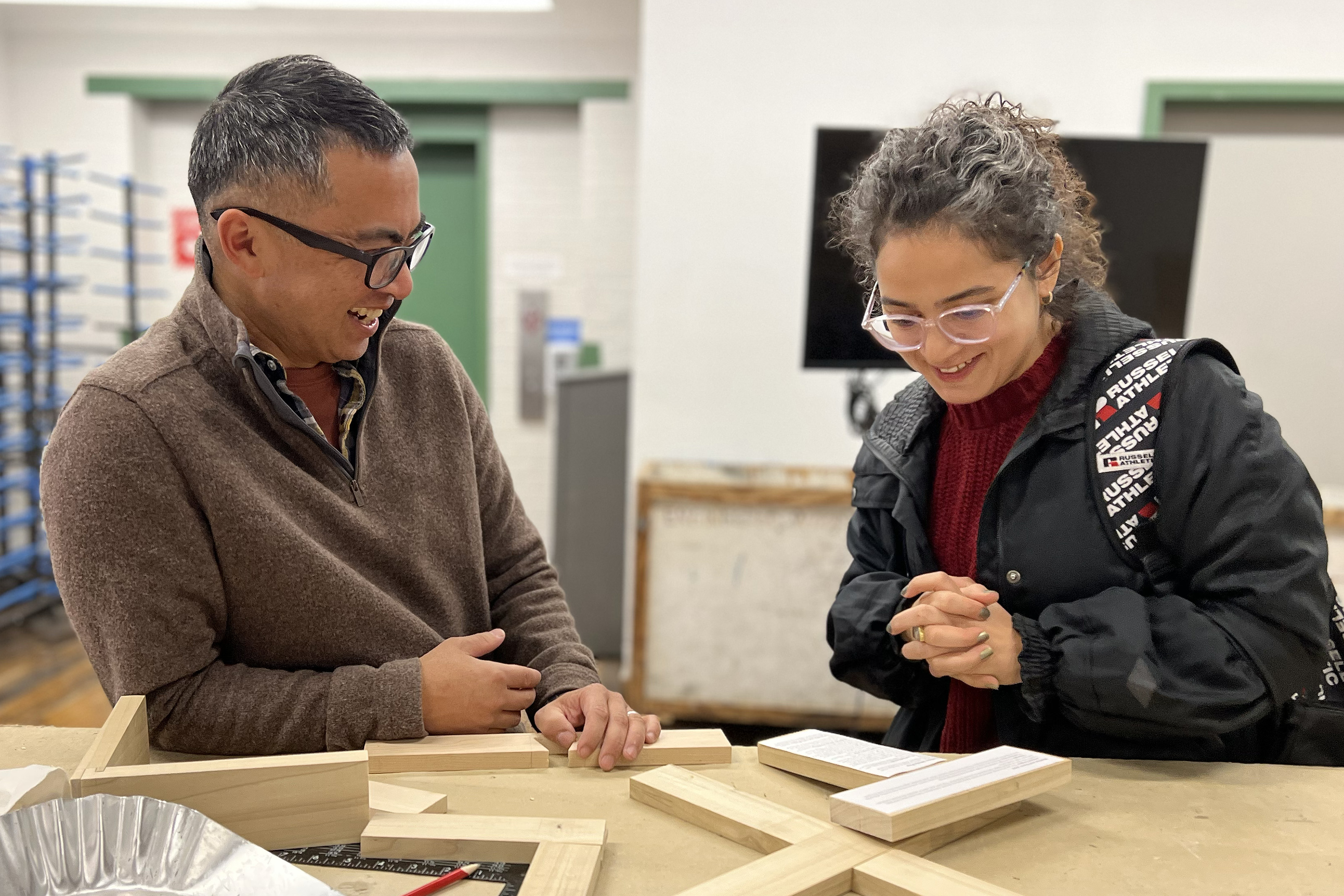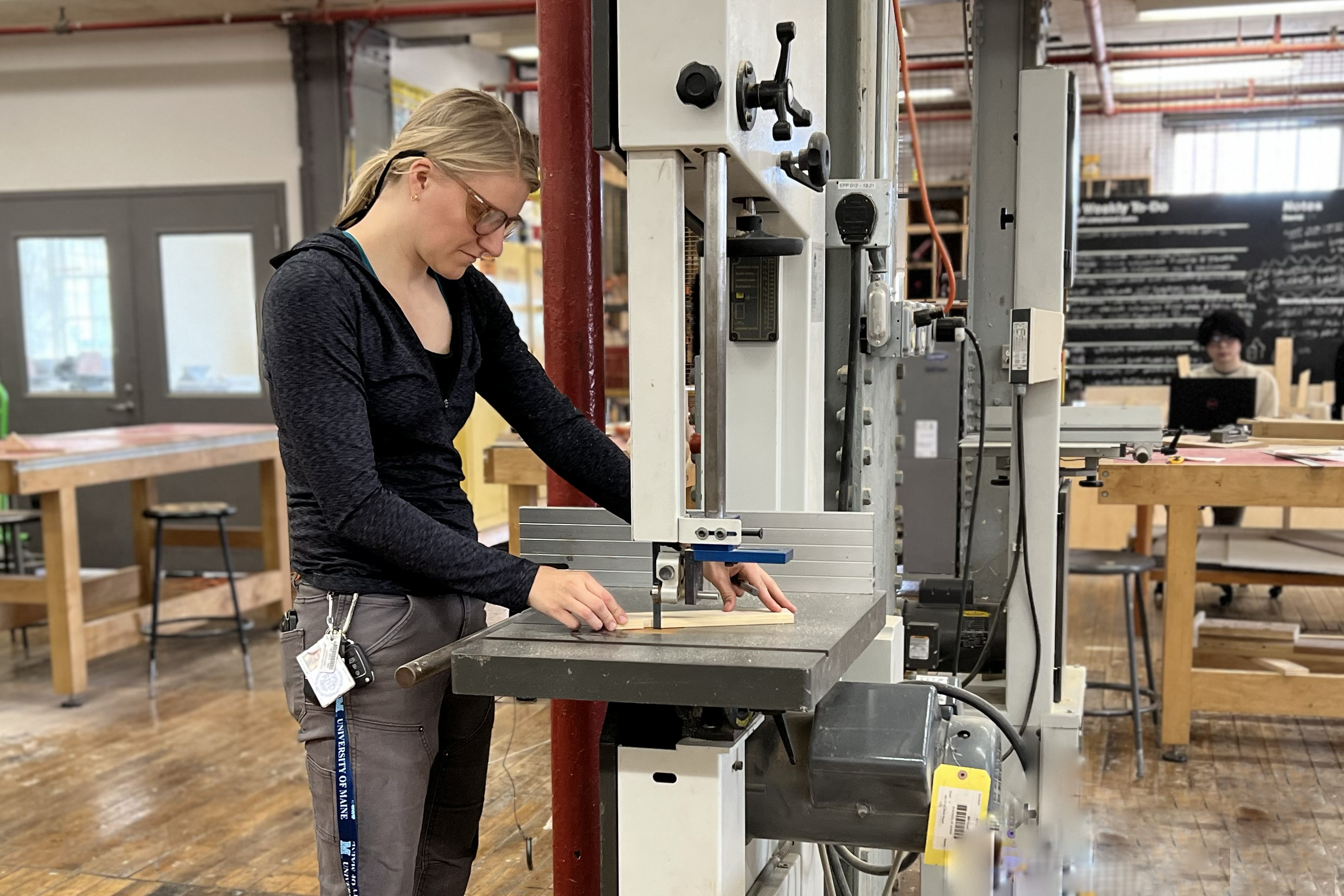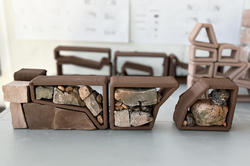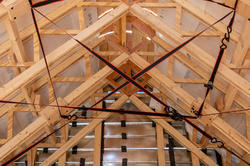Students in a spring studio called Clay Matters conduct material investigations in support of their evolving thesis projects.
Yearlong Engagement with RISD’s Sustainability Design Lab Probes the Many Uses of Wood

“Wood is organic, alive and unpredictable, which is why I love it,” says furniture maker and sculptor Christopher Kurtz. “All of my ideas come from the shop.”
Kurtz was speaking to RISD students about his practice earlier this semester in the Industrial Design department’s woodshop. He is one of nearly a dozen experts on forest ecology, boatbuilding, woodworking, furniture making and Indigenous ecology sharing their knowledge with students selected for this year’s Sustainability Design Lab exploration of wood.
The lab—which promotes low-impact design strategies and inclusive, socially responsible practices—is supporting two studio-seminar combinations during AY 2024–25: one in the fall and one in the spring. The fall studio, Territories of Wood, is led by Landscape Architecture Department Head Johanna Barthmaier-Payne and Associate Professor of Industrial Design Tom Weis, and the fall seminar, Steering the Craft, by Assistant Professor of Landscape Architecture Fatema Maswood.
Together, the two courses examine the material culture of wood and its relevance across fields of design, delving deep into the environmental, ecological and sociocultural impacts of its use. Students are analyzing land use patterns in relation to power dynamics and value systems and learning about wood’s physical properties as they work together to construct a traditional wooden boat.


“By engaging in a hands-on fabrication process, we’re figuring out conventional and more novel ways to use wood as a sustainable material,” Barthmaier-Payne explains. “We’re using locally grown timbers and exploiting their fast regrowth cycles, versatility for recycling and adaptive reuse, thermodynamic properties and distinctive aesthetics.”
“A core task of our work together is combatting extinction-oriented practices of research and design,” Maswood adds. “We are attempting to decommodify wood, to forge a more intimate, embodied relationship with it using place-based research methods as critical tools for inquiry and analysis.”
Students began the semester with an extended field trip to Maine, where they learned to read the forest with ecologist Tom Wessells, checked out a traditional Portuguese sardine boat under construction at The Apprenticeshop, learned how to operate a sawmill and visited the University of Maine’s Advanced Structures and Composites Center for a look at the future of forestry and wood products.
“Things really clicked for the students when we went up to Maine,” says Weis. “There is such a deep history of boatbuilding in that area, and its impact on the local community is an important part of the story.”
Boatbuilding is also an important part of Rhode Island’s story, and the class traveled to Bristol to visit the Herreshoff Marine Museum, where they were treated to a behind-the-scenes tour with curator Evelyn Ansel. Brothers John and Nathanael ran the Herreshoff Manufacturing Company from 1878–1924, designing and building steam-powered fishing boats, racing yachts and high-speed torpedo boats for navies around the world.


Ansel pointed out that southern New England’s forests had already been decimated by the time the Herreshoffs started building, so they imported timber from places like the American south, Oregon and South and Central America. “Also keep in mind that this was all before bridges, cars and highways,” she added. “People traveled by boat.” Wearing protective gloves, she showed students historic artifacts like a customized Stanley hand planer still kept in Nathanael’s shop, now part of the museum’s climate-controlled model room, where more than 400 hull models at various scales are kept in pristine condition.
Back on RISD’s campus, students are also working with hand planers, as well as basic power tools, as the group boat-building project gets underway. Undergrads Cherie Hu 25 IA and Bertram Zhang 25 IA are working together to build a sled (a kind of jig) that will make the planking easier (see top photo). Grad students Tryn Collins MLA 25 and Vija Lietuvninkas MID 25 are preparing to fit the white oak keel into the strongback (or frame) and getting it ready for the rest of the class to attach thin, lightweight cedar planks that will form the boat’s hull.
“I’ve always been drawn to wood and to the humble, community-oriented aspects of traditional craft,” says Lietuvninkas as she checks that the slot she’s working on is flush with the keel. “My thesis project will probably focus on spoon carving and green woodworking.”
Simone Solondz
November 18, 2024


